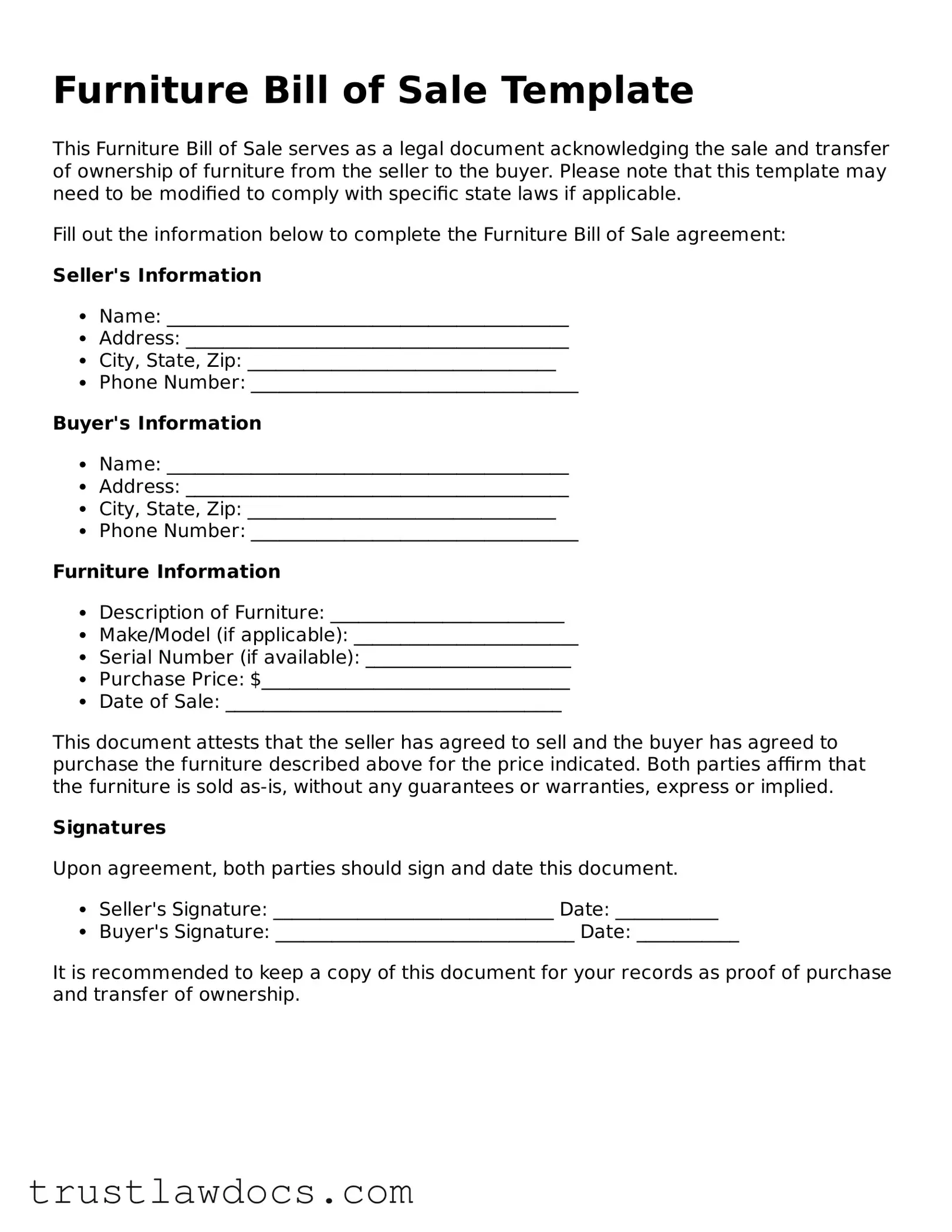A Furniture Bill of Sale form is closely akin to a Vehicle Bill of Sale. Both serve as official records that a transaction has taken place, transferring ownership of an item (be it furniture or a vehicle) from one party to another. Each document includes details such as descriptions of the item sold, the purchase price, and the parties' information, ensuring that the transaction is traceable and legally acknowledged.
Similarly, a Boat Bill of Sale shares a key purpose with a Furniture Bill of Sale. It's specifically designed to document the sale and transfer of ownership of a boat. Like the Furniture Bill of Sale, it includes essential information such as the make, model, year, and any additional equipment or features included in the sale, alongside the buyer's and seller's details to affirm the transaction's authenticity.
An Equipment Bill of Sale also mirrors the structure and intent of a Furniture Bill of Sale. This document is used to record the sale of any equipment, detailing the condition, serial number, and any warranties or guarantees. It functions as a legal record to protect both buyer and seller, similar to how a Furniture Bill of Sale documents the specifics of a furniture transaction.
A General Bill of Sale is yet another document similar to a Furniture Bill of Sale, with a broader application. It can be used for the sale of various items, not limited to any specific category like furniture. This versatility means it also captures the essential transaction details - the sold item’s description, sale amount, and parties involved - providing a legal acknowledgment of the sale, regardless of the item type.
The Real Estate Bill of Sale, while focused on property transactions, parallels the Furniture Bill of Sale in its core function of documenting a sale. It includes detailed information about the property, the transaction amount, and the parties' signatures. Though it deals with real estate, the principle of confirming and recording the details of the sale is very much aligned with that of a Furniture Bill of Sale.
Another related document is the Gun Bill of Sale. Specifically tailored for firearms transactions, this document records details such as make, model, caliber, and serial number of the gun, alongside buyer and seller information. Its specialized nature for gun sales doesn’t detract from its fundamental similarity to a Furniture Bill of Sale in providing legal proof of a transaction.
The Aircraft Bill of Sale follows a similar vein, documenting the sale of planes or helicopters. Despite the high value and specificity of the assets involved, the document's purpose - to legally record a sale's specifics and transfer ownership from seller to buyer - aligns closely with the intentions behind a Furniture Bill of Sale.
A Livestock Bill of Sale is akin to a Furniture Bill of Sale when it comes to the sale of animals such as cattle, horses, pigs, and goats. It notes details like breed, health condition, and quantity, serving the same purpose of proving ownership transfer and detailing the transaction, ensuring both parties are legally protected.
Lastly, the Business Bill of Sale reflects the Furniture Bill of Sale's objectives in the context of selling a business. It includes crucial transaction details such as the business's name, assets being sold (furniture, intellectual property, etc.), and the sale price. This document stands as a legal record of the transaction, safeguarding the rights and interests of all parties involved, just like a Furniture Bill of Sale.
